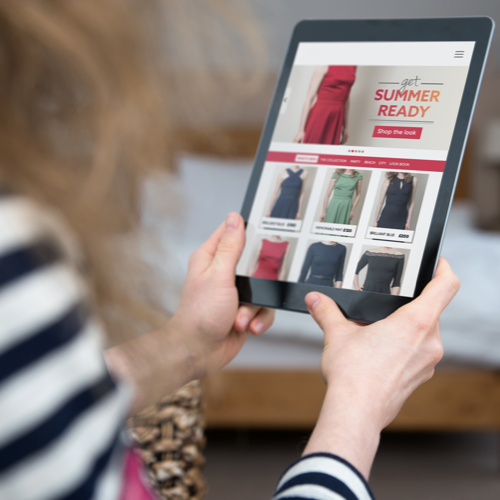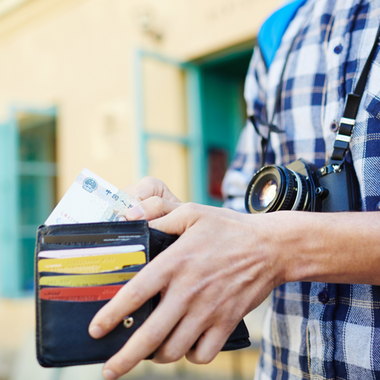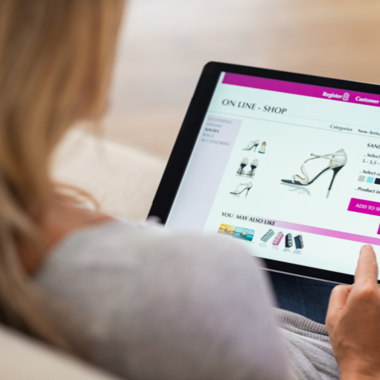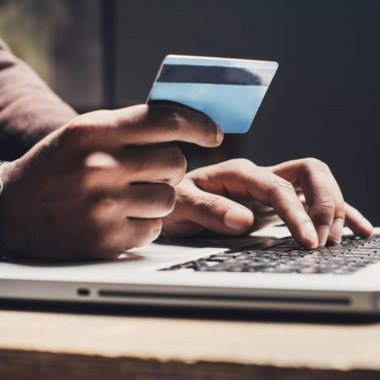
- Ten minutes read
How COVID-19 is impacting consumer payment preferences
Five key takeaways from our latest research Lost in Transaction: The impact of COVID-19 on consumer payment trends, and what they mean for the future of eCommerce
To discover how COVID-19 has directly impacted how consumers view payments today, and what this might mean for eCommerce in the future, we surveyed 8,000 consumers from the US, UK, Canada, Germany, Austria, Italy and Bulgaria on their current and predicted future attitudes to payment methods.
In the coming weeks, we’ll be publishing detailed analysis of the results on the Paysafe blog in our article series Lost in Transaction: The impact of COVID-19 on consumer payment trends, but in the meantime here are five key takeaways from the research data.
1. There is a surge in eCommerce that has long term growth potential, but is being held back by several consumer concerns
For more detailed analysis on this topic read our blog LiT: The long-term impact of COVID-19 on eCommerce.
It is unsurprising to discover that stay at home orders and social distancing is having a huge impact on consumers’ reliance on eCommerce. Lack of access to high street stores, and the need to shop for new items to combat the pandemic are both driving consumers online in the search for purchasing solutions.
Overall, 42% of consumers are shopping online much more because they either cannot, or will not, shop in physical stores. A third of consumers (33%) say that they are shopping online for specific products that they wouldn’t need if not for COVID-19. Consumers in the US are being most affected in both regards; over half (54%) of US shoppers are turning to online sellers because they can't access stores and almost as many (46%) say they are making specific COVID-19 related purchases online.
Conversely, while social distancing is having some impact in Germany and Austria, the impact has not been as pronounced. Only a third of consumers in Germany (31%) and Austria (32%) are shopping online more due to lack of access to stores, and even fewer are shopping for COVID-19 specific items online (26% in Germany; 20% in Austria).
More surprising, perhaps, is the percentage of consumers that are now shopping online for the first time during COVID-19. Globally, 18% of consumers said that they are now shopping online for the first time due to COVID-19, and this increases to 25% in the US and 21% in the UK. This is a significant volume of potential long-term customers for online retailers; eCommerce businesses that capitalise on the surge in demand for online products and services now by offering consumers a convenient and enjoyable experience throughout the buying process will not only boost their revenues in the short term, but also put themselves in the best possible position to retain new customers once the COVID-19 pandemic subsides. This growth opportunity is substantial; 38% of consumers say they are planning to shop more online following the pandemic, and convenience (65%) and enjoyment (42%) are the two main reasons for this.
However, despite the surge we are seeing there are still negative factors impacting this growth. In addition to offering the optimum consumer experience, online businesses must address these consumer concerns to maximise any potential opportunity to expand following COVID-19. Many of these concerns can be addressed through the checkout.
For example, more than four-in-ten (42%) consumers say they would shop online more but are concerned about their items being delivered. A similar percentage (41%) of consumers are limiting their online shopping out of concern for being the victim of fraud. Offering consumers the ability to pay on delivery – either via a contactless card reader or via an invoice – is one strategy to alleviate the concerns of the former group; diversifying payment methods available at the checkout so that consumers do not feel forced to share their financial details with an unfamiliar vendor combats the second. Diversifying the checkout as a protection against fraud works both ways; alternative payment methods that indemnify the online business will reduce the overall percentage of fraudulent transactions the business experiences.
Q: To what extent do you agree with the following statements about how COVID-19 is impacting the amount of online shopping you are currently doing?
2. COVID-19 is changing the way people shop online, as well as how much shopping they’re doing
Overall, the strong regional payment preferences that existed before the start of the COVID-19 pandemic still remain. For example, credit cards continue to be the most popular method of online payment in Canada and the US; 67% of Canadian consumers and 56% of US consumers have made an online payment with a credit card in the past month. Card payments are also popular in the UK and Bulgaria; a greater percentage of consumers in the UK (60%) and Bulgaria (70%) have made an online payment with a debit card than any other method in the past month.
Credit cards are the most popular method of online payment in Austria, but a higher percentage of Austrian consumers have made an online payment via direct bank transfer (45%) in the past month than any other country. Payment by invoice (39%), traditionally a very popular method of payment in the DACH region, is also considerably more popular in Austria (39%) and Germany (32%) than any other market.
Globally, digital wallets are almost as popular (39%) with consumers as credit cards (44%) or debit cards (42%), and significantly more popular in Italy (50%) and Germany (43%) than debit or credit card payments. Consumers have also turned to eCash solutions in the past month, particularly in the US (14%), Bulgaria (10%), Germany (9%), and Austria (7%).
Q: Which payment methods have you used in the past month when making payments online?
However, despite these historical regional payment preferences still being identifiable, COVID-19 is definitely having an impact on how people pay online. Overall, 56% of all consumers say they have completed an online transaction using a payment method that is new to them since the outbreak of COVID-19, and some consumers have experienced more than one new payment method in the same time period. More consumers in Bulgaria (72%) and the US (65%) have tried new payment methods for the first time; in the case of the US this is at least partly being driven by the fact that 25% of consumers say that COVID-19 is resulting them shopping online for the first time.
Broadly, the percentage of new consumers that are trying each payment method mirrors overall usage, both globally and in each market. Card payments are the most popular new method of payment overall, but consumers are also turning to alternative payments as they either shop online for the first time, engage with unfamiliar online vendors, or their priorities when selecting a payment method change.
Digital wallets are almost universally popular, with 15% of consumers using this payment method for the first time since the outbreak of COVID-19. In Germany (9%) and Austria (9%) invoices are again popular. Consumers in the US (11%) and Italy (18%) are also turning to prepaid cards.
Q: Since the outbreak of COVID-19, which of the following payment methods have you used to make an online payment for the first time?
3. COVID-19 is changing how consumers prioritise the method they use when making a payment
As we’ve already discovered consumers are turning to new payment methods during COVID-19, and when we dig into this a little further we see that shifting priorities when selecting a payment method is a significant contributing factor. When asked which factors had become more important to them following the COVID-19 outbreak, only 16% of consumers said that their priorities had not been affected at all when making online payments. Even in Germany (26%), Austria (24%), and the UK (22%), where a greater percentage of consumers say their priorities have not been affected by COVID-19, approximately three quarters of consumers are thinking about payments differently. In the US (12%), Bulgaria (11%), and Italy (11%), the percentage of consumers whose payment priorities have been affected by COVID-19 is approaching 90%.
The most significant influence on consumer payment priorities is concern about fraud. A third of consumers (34%) say that being protected against financial loss has become an even greater concern for them since the outbreak of COVID-19, and almost the same percentage (32%) say that guaranteeing that their financial data remains secure is more important to them now than before the COVID-19 outbreak. Reasons for this change in attitude may include consumers’ concerns that there are more fraudsters operating during COVID-19, trepidation caused by shopping on more unfamiliar sites, or greater concerns about their financial health generally.
Another factor that has become more important to consumers since the COVID-19 outbreak is the ability to receive a refund on their purchases. Whether real or perceived, consumers believe that getting refunds from merchants is a struggle. This, coupled with the concern that orders will not be facilitated or events will be cancelled, means that almost a quarter (24%) of consumers are considering changing their payment habits to alleviate this concern. This factor is especially relevant to Italian consumers; 38% say that the ease of getting a refund has become more important to them since the outbreak of COVID-19, more than any other factor.
Although familiarity with the payment method has grown in importance for 16% of consumers, this is lower than many other factors, suggesting that consumers are generally open to using new payment methods that they are unfamiliar with during COVID-19 if they address their more pressing concerns.
Q: Which of the following have become more important to you since the start of the COVID-19 outbreak?
4. Consumers are conflicted about cash, but it remains central to their spending plans
For more detailed analysis on this topic read our blog LiT: What’s next for cash post-COVID-19?
Consumers appear to be in two minds when it comes to cash usage during COVID-19. On the one hand, consumers are uncomfortable with the idea of not being able to access cash; nearly three quarters (72%) of consumers would be worried if this was the case. So cash remains central to the payments ecosystem even during COVID-19, with half (50%) of consumers going one step further by stating that cash is the most reliable form of payment during a crisis. This sentiment is especially true for consumers in the US (60%), Bulgaria (53%), and Germany (52%); over half of all consumers in these markets say cash is the most reliable method of payment in a crisis.
And even where consumers are shopping online more due to social distancing or health concerns, this isn’t affecting their desire to use cash. Overall, 40% of consumers say they would buy products online using cash if it was easy to do so, and 36% of consumers say they would shop online more if they could pay easily with cash. Again, it is US consumers that are most favourable of using cash in this way; 47% of US consumers would use cash to make online payments if it was easy to do so, and 43% would shop online more if they were able to pay with cash.
However, there has also been an acknowledgement by consumers that cash might not be safe to handle during the COVID-19 pandemic due to it being a potential transmitter of the virus. Despite the World Health Organisation stating that cash can be handled safely if consumers wash their hands thoroughly afterwards, many stores are either strongly encouraging shoppers to avoid using cash if possible, or have banned using cash altogether. Because of this, nearly half (48%) of consumers overall say that they are currently worried about using cash, and this figure exceeds 50% in the UK (53%), US (55%), and Canada (56%). At the other end of the spectrum, only slightly over one third (37%) of consumers in Austria say they have health concerns about continuing to use cash during COVID-19.
And this impact on overall cash usage may extend beyond COVID-19. The same percentage of consumers (48%) are planning to reduce their cash usage in the long term following COVID-19 due to ongoing concerns about health and safety issues.
For deeper analysis on this topic read LiT: What’s next for cash post-COVID-19?
Q: To what extent do you agree with the following statements?
5. This may be the catalyst for contactless adoption, especially in the US
For more detailed analysis on this topic read LiT: Is COVID-19 a catalyst for US contactless adoption?
If consumers’ changing relationship with cash does develop into a long-term trend, then we can expect to see adoption of contactless payments continue to increase. Despite the adoption of contactless being limited in some markets, 65% of consumers already agree that contactless payments are more convenient than cash, and 56% say they are more comfortable using contactless cards now than a year ago. Unsurprisingly consumers in Canada and the UK, the countries with the greatest level of contactless adoption, have the strongest feelings about this. 70% of UK consumers think that contactless payments are more convenient than cash, and 61% are happier to use contactless cards than they were a year ago; 74% of Canadian consumers say that contactless cards are more convenient than cash and 59% are happier to use contactless cards than they were a year ago.
Despite much lower rates of overall adoption, attitudes to contactless payments are also shifting in the US. 69% of US consumers say that contactless payments are more convenient than cash, and 59% say they are happier to use a contactless card than they were this time last year.
And there is evidence that this changing attitude to contactless payments, brought on at least in part by COVID-19, will have a long-term impact. More than half of all consumers (54%) say that using contactless payments more often during COVID-19 means that they are more comfortable with using this payment method in the future. Almost the same percentage (53%) of consumers say that using contactless payments during COVID-19 has meant that they are more comfortable with the concept of a contactless society.
And while there is a degree of preference for mobile wallets instead of contactless cards, the data suggests predictions consumers would bypass contactless cards altogether and migrate directly from EMV-enabled cards to mobile wallets are somewhat overstated. While almost a quarter of consumers (23%) say that having a mobile wallet means that they have no need for a contactless card, over half (52%) of all consumers say they prefer contactless cards over mobile wallets due to concerns about their phone being stolen.
However, in the US, where market penetration of contactless cards is much lower, preference for mobile wallet adoption over contactless cards is much higher. Despite 59% of consumers saying they are happier to use contactless cards than this time last year, a third (33%) of consumers say having a mobile wallet means they see no need for a contactless card and 44% say that biometric authentication means that mobile wallets are more secure than contactless cards.
One factor that may impact consumers’ preference for mobile wallets over contactless cards is a growing familiarity and reliance on biometric authentication. Over a third (36%) of consumers already agree that mobile wallets are more secure than contactless cards due to biometric authentication, and this may increase as biometrics become more central to payment verification more generally.
Q: To what extent do you agree with the following statements?
In the following weeks we will be publishing more findings from our Lost in Transaction: The impact of COVID-19 on payment trends research, including detailed analysis of consumers’ changing attitudes to cash and contactless payments, digital P2P payment methods, the growth of subscription models, and the long-term impact of COVID-19 on eCommerce. Check back in on Paysafe Insights for all of our research.
All data referenced is taken from our latest consumer research Lost in Transaction: The impact of COVID-19 on consumer payment trends. To compile this data Paysafe and Sapio Research surveyed 8,000 consumers across the US, UK, Canada, Bulgaria, Italy, Austria, and Germany between 8-15 April 2020. This data is published on Paysafe Insights.




